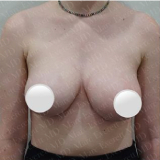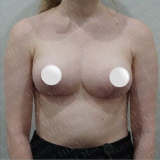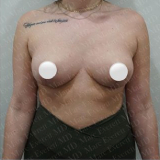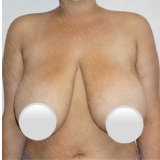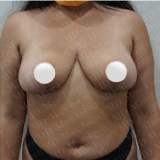New York Blepharoplasty
Consultations offered at our two convenient locations in Manhattan, NY and Queens, NY

Blepharoplasty is a surgical procedure that corrects droopy and excess skin of the upper and lower eyelids. Loose eyelid skin can contribute to an aged appearance and even impair vision. Dr. Marc Everett offers both upper and lower blepharoplasty to patients interested in refreshing their appearance and restoring their full peripheral vision. A blepharoplasty can target:
- Excess eyelid skin
- Droopy upper eyelids
- Under-eye bags
- Peripheral vision impairment
- Fatty deposits around the eyes
Blepharoplasty is not meant to address sagging eyebrows, under eye discoloration or crow’s feet around the corners of the eyes, although it may make a small improvement in these common trouble areas. Blepharoplasty is commonly paired with other procedures, including a facelift, forehead lift, injectable fillers and facial resurfacing as part of a comprehensive cosmetic treatment.
The Procedure
Blepharoplasty is completed using general anesthesia or local anesthesia with intravenous sedation. The surgical procedure varies between each patient, depending on what exactly needs to be addressed. Excess skin on the upper eyelids can negatively affect peripheral vision and may need to be removed due to functional concerns, while excess skin on the lower eyelids is usually removed as a matter of cosmetic preference. If the patient receives treatment on both the upper and lower eyelids, the work on the upper eyelids will typically be completed first.
Once the patient has been numbed, incisions are made within the folds of the eyelids, on the inner eyelids or along the lash line. This strategic placement of the incisions not only supplies easy access to the underlying tissues but also keeps scars hidden within the natural creases of the skin. The underlying muscle tissues are then repositioned, and any excess skin is trimmed away. During lower blepharoplasty, fatty deposits contributing to the appearance of under-eye bags will be removed.
Once any excess tissue has been removed and the necessary adjustments have been made, the incisions will be sutured closed. The entire surgery takes about one to two hours. Blepharoplasty is completed as an outpatient procedure, and patients can return home the same day as their surgery.
Recovery & Results
Following blepharoplasty, patients should expect mild to moderate swelling and bruising for about two weeks. Other common side effects include watering eyes, light sensitivity, double vision, dry eyes, and blurred vision. Dr. Marc Everett provides all of their patients with detailed information on how to best mitigate the side effects of eyelid surgery to ensure a safe and comfortable recovery. These side effects tend to last about one week and can be minimized using ice packs, eye drops, and ointments.
Patients should expect to spend about one week away from work and wait at least three weeks before resuming any strenuous activity, such as exercise. Wearing sunglasses will be recommended to prevent wind and excess sun from bothering the eyes while they remain sensitive. Patients will also need to avoid rubbing their eyes while their incisions heal and should sleep with an elevated head for the first 72 hours to reduce swelling. If stitches were used, they would be removed three to seven days following surgery.
Once side effects have diminished, results will be immediately visible. Final results will continue to improve for several months as swelling subsides and the incisions continue to fade.
FAQ
Will blepharoplasty get rid of my crow’s feet?
No, blepharoplasty is only meant for the removal of excess skin and tissue that has begun to droop. If you would like to also manage your crow’s feet, let us know, and we can discuss our range of injectable fillers treatments with you during your initial consultation.
Will there be noticeable scarring?
We will work with absolute precision to keep your incision lines out of sight by placing them within the natural creases of the skin and in other hidden areas. If visible scarring is present, it will be tough to spot and far outweigh the condition of your loose eyelid skin before surgery. Rest assured, we make it our priority to eliminate visible scarring so that your incision lines will not interfere with your results in any way.
What causes under-eye bags?
Under-eye bags are commonly a hereditary problem and may develop as the skin ages or be present since a young age. Fatty deposits under the eyes can become more pronounced as the skin around them begins to sag and stretch with age, leaving the under-eye bags more exposed and noticeable.
Will blepharoplasty create a change in my facial expression?
Blepharoplasty will not affect the underlying facial muscles responsible for creating expression and will not make a large difference in your overall facial appearance. However, it can create a more youthful and alert look by removing any excess skin that has blocked the eyes.
Am I a good candidate for blepharoplasty?
If you have excess upper or lower eyelid skin that has led to an aged appearance or vision impairment, then you are most likely a good candidate for blepharoplasty. Schedule a consultation with us to receive a proper evaluation and learn more about your treatment options.
How long will blepharoplasty results last?
Blepharoplasty is a comprehensive procedure that provides lifelong results. While the skin will continue to age and may begin to droop again, it will never be as bad as it was before surgery. Patients can expect the results of their blepharoplasty procedure to last for life.
Dr. Marc Everett provides eyelid rejuvenation to his patients through blepharoplasty. If excess eyelid skin is impairing your vision or you would like to restore a youthful and refreshed appearance, give us a call today to schedule a consultation and learn more about blepharoplasty. You can reach our New York office at 212-774-7715 to book your appointment.


